Every solar-powered system requires regulation to prevent battery damage, which is where our list of the very best solar charge controllers comes in. The price of the controller, combined with the price of the panels and batteries, means solar system users may be intimidated by the wide range of models available on the market.
But there’s good news! It’s relatively easy to figure out what voltage you’ll need to properly service your solar system, whether it be for an RV, trailer, barn, workshop, or household.
With a little math, a touch of research to find and buy the best solar charge controller for your system can actually be quite simple. There are, of course, several important considerations to keep in mind, like safety features, the reputation of quality, and price point – but we’ll get to that later on.
Our Top Picks
| Product | Details | ||
|---|---|---|---|
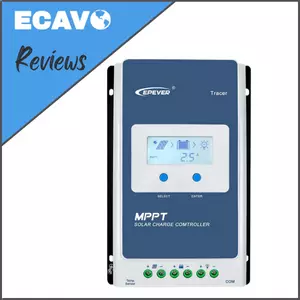 |
Our #1 Pick: EPEVER MPPT Charge Controller | This is a highly efficient and affordable product perfect for any task. We have little to no complaints about its performance, and that’s why it’s at the top of our list. | Check Price |
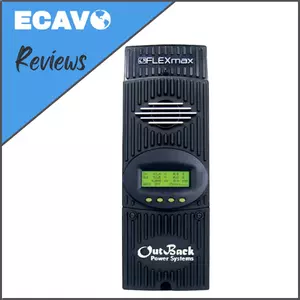 |
Best for Going Off-Grid: Outback Flexmax 80 FM80 MPPT 80 AMP Solar Charge Controller | Due to its sturdy construction, we categorize this as the best option if you’re going off-grid. Plus, it’s one of the most reliable options you’ll find. | Check Price |
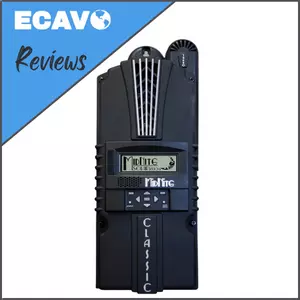 |
Best for Guaranteed Safety: MidNite Solar Classic 150 Charge Controller | One of the safest charge controllers in the market with a great warranty policy and a lot of extra features. The price tag is the only reason we didn’t rate it as number one. | Check Price |
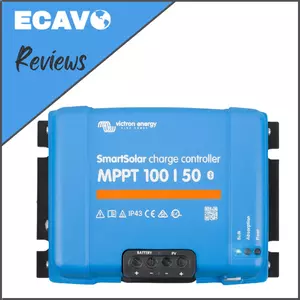 |
Best for Cold and Cloudy Environments: Victron SmartSolar MPPT 100/50 Solar Charge Controller | The title pretty much says it all. This option will be your best friend if you need a reliable controller and live in places where strong sunshine isn’t common all year-round. | Check Price |
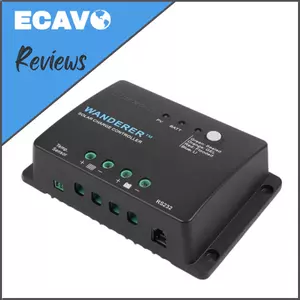 |
Best Charge Controller for Small Systems: Renogy Wanderer | This is the first PMW charge controller on our list, but that doesn’t mean that it isn’t effective. It actually makes it our best option for small systems. | Check Price |
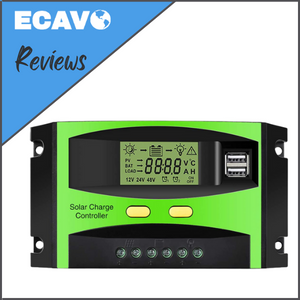 |
Best Budget Option: MOHOO 30A Charge Controller | This isn’t only the most affordable on our list, but one of the perks is that you can use it directly to charge phones or other small devices. | Check Price |
What is a Solar Charge Controller?
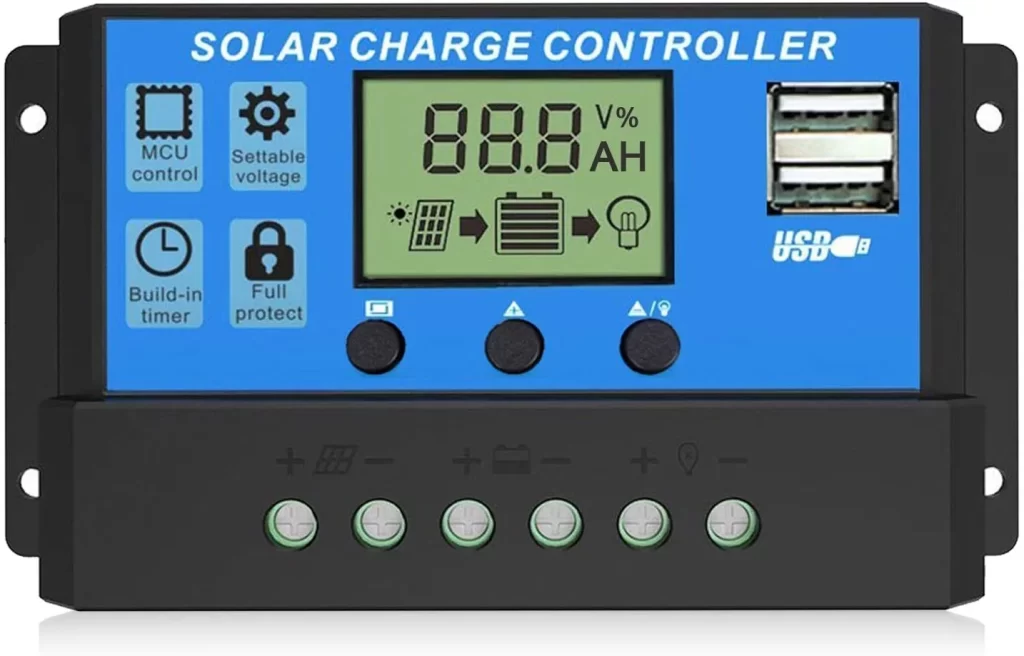
To put it simply, a solar charge controller regulates the power that’s transferred from a solar panel to a battery.
It’s important to use a charge controller as it improves the efficiency of a solar-powered system by up to 50%, can prevent the batteries from being overcharged, and will extend the battery’s life when used correctly.
If there’s no regulation, the batteries can be easily damaged, which will cost you money and time to fix.
There are two main types of solar charge controllers: Maximum Power Point Tracking (MPPT) and Pulse Width Modulation (PWM). Each type serves its own purpose, but ultimately the MPPT controllers are more commonly used.
How We Ranked the Best Solar Charge Controllers
Type
The type of the solar charge controller refers to whether it’s an MPPT or PMW model. MPPT controllers are widely accepted as the best of the best, so they inherently top our list.
However, we’ve also included a few PWM controllers as high-quality options. These are sometimes more suitable for those looking to devise simple systems to power solar lanterns in a garden or a mobile device.
Battery Voltage
Most battery charging units fall within the 12-48VDC range. However, some may need a capacity of 60V or 72V.
The standard is 12VDC, but for those running very large systems, like compounds or entire households, a higher voltage capacity is necessary. The battery voltage capacity must meet your individual needs, but we also consider the ability to scale your system up if that’s what you’re looking for.
Max Input Voltage
While it may appear that a 12-volt panel would be compatible with a 12-volt battery bank, that’s not the case. Most panels don’t actually run at their rated voltage because the power generated by the sun can vary depending on different factors, such as how bright the sun is.
Not only that, but some homeowners or business owners may want to connect multiple panels to create a grid-tie system. This would require an even higher max input voltage for the controller in order to compensate for the extra power.
The best solar charge controllers are those with a higher max input voltage so users can scale their systems depending on their lifestyle. A higher max input will also account for varying weather patterns.
Max Current Output
The number of amps that your controller will feed to your devices from the battery bank is important because it determines what type and size of devices you can charge with your solar panels.
Those that are only compatible with 20-30A have a smaller capacity than those rated at 80A or higher. While higher doesn’t necessarily mean better, it’s a key factor to consider when determining what model you’d like to purchase.
Extra Features
Most solar charge controllers come equipped with a variety of extra features. These features allow for the utmost customization, meaning users can design the perfect system to service their solar array and batteries.
Probably the most important extra features you should look for are those related to safety, as they prevent dangerous mishaps from occurring – the most common problem when working with high voltage electric systems.
Here are the best solar charge controller features to keep an eye out for:
- LED screens
- Data logging
- Remote-control management systems
- Safety features that prevent overcharging, overload, short-circuit, reverse polarity, and electric arcs
Best Solar Charge Controllers Reviewed
Our rankings take into consideration a variety of uses and purposes. It isn’t limited to just MPPT controllers. As such, safety and quality standards are big factors in our rankings.
1. Our #1 Pick: EPEVER MPPT Charge Controller
Product Ratings
| Quality VS Price | 5/5 |
| Practicality | 5/5 |
| Reliability | 3/5 |
Type: MPPT | Battery voltage: 12-24V | Max input voltage: 100V | Max current output: 30A
What We Liked
- A cheap MPPT controller compared to other top-tier models with great safety protections
- Easy to install
- Comes with a wide range of extra (and very handy) features
- Great customer support
What We Didn’t Like
- Doesn’t offer as high of a max input voltage or max current output as other MPPT models
- Other users have reported issues when trying to use the controller with lithium batteries
Description
Features: Four-stage battery charging, temperature compensation, LCD screen, PC software, supports remote meter, and multiple load control methods.

Overall, the Epever solar charge controller has an advertised high tracking efficiency rating of no less than 99.5%. The brand has other models with current outputs from 20A to 40A. However, the 30A version is a good middle-ground for average buyers who aren’t looking to create huge solar arrays.
It’s also a great choice for those looking to create off-grid solar panel systems to power a home or bunker. With free system design and technical support from the company, Epever makes it super simple to harvest energy-efficient and eco-friendly solar power.
The charge controller works with gel, sealed, and flooded lithium battery types, and has multiple load control modes, including manual, lighting, and light timer. Plus, the controller comes packed full of safety protections, including battery overvoltage, load overload, PV short circuit or reverse polarity, and more.
Our Experience
First of all, the great price and high quality of this MPPT solar charge controller are stellar! We have used the device to regulate solar panels on an RV and our home, so we can say that the installation is very easy.
We have read some reviews from other users claiming that they received failing controllers, but they report that the manufacturer’s customer service was fast and friendly.
Our favorite thing about the Epever MPPT solar charge controller is that it has an automatic system voltage recognition of 12 to 24V, and an auto-saving function to remember settings.
The unit also comes equipped with a multi-function LCD display system to display information and can also be connected to PC software or an MT50 tracker for constant monitoring.
See Price on Amazon2. Best for Going Off-Grid: Outback Flexmax 80 FM80 MPPT 80 AMP Solar Charge Controller
Product Ratings
| Quality VS Price | 5/5 |
| Practicality | 4/5 |
| Reliability | 4/5 |
Type: MPPT | Battery voltage: 12-60V | Max input voltage: 150V | Max current output: 80A
What We Liked
- Can handle high amounts of DC volts and convert them from 12VDC to 60VDC for battery banks
- One of the most reliable brands on the market
- Comes with a wide range of extra (and very handy) features
What We Didn’t Like
- Very high price point for the system and customizable additions
- Although the controller comes with a lot of extra features, you also need to buy other Outback tools to get the best out of it. That means that your initial investment could easily increase
Description
Extra features: Programmable, backlit display, logged system performance data, temperature control, and network integration capabilities.
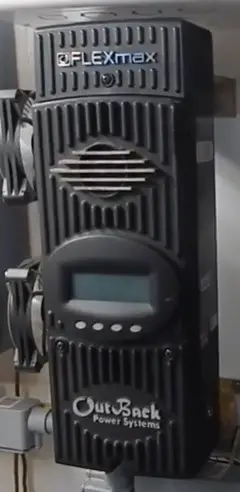
The Outback Flexmax FM80 is one of the best solar controllers on the market as it supports a wide variety of system designs and battery types. With a huge max input voltage capacity, the Outback controller is perfect for off-grid systems that people install on roofs or rural areas.
One of the key selling points for this device is its capacity for streamlined management and programming. The manufacturer also allows for more advanced configurations when connected to the MATE system display and controller, or a branded inverter and a HUB communications manager.
Beyond its ease of use, the manufacturer designed the Outback solar charge controller with a discreet black case and green screen. This unit is a great addition to any solar panel system design for advanced and beginner solar aficionados.
The specific FM80 model also comes with a built-in 80-character display that shows data logs from the past 128 days. This data logging can be easily centralized using other advanced Outback tools, like an inverter, MATE3 controller, and HUB communications manager.
With automatic temperature control, the device can use intelligent thermal management systems to cool the system to an ambient temperature. You can also supplement this with an optional remote temperature sensor that you buy separately.
Our Experience
We are overall happy with the Outback brand. This model is no exception. With sturdy construction and high-quality design, we have few complaints and the manufacturer’s customer service is prompt and effective.
Honestly, our only complaint is that the controller doesn’t come with a data cable. That is necessary to connect the Outback controller to the HUB communications manager.
Because of that, buyers must purchase one separately if they want to centralize their data logging and system management.
See Price on Amazon3. Best for Guaranteed Safety: MidNite Solar Classic 150 Charge Controller
Product Ratings
| Quality VS Price | 5/5 |
| Practicality | 3.5/5 |
| Reliability | 4/5 |
Type: MPPT | Battery voltage: 12-72V | Max input voltage: 150V | Max current output: 96A
What We Liked
- Very safe to use as it’s equipped with an automatic arc fault detection that trips a circuit when it detects dangerous electric arcs
- Great warranty policy
- One of the safest charge controllers on the market
What We Didn’t Like
- The built-in software has a few coding bugs that make it difficult to navigate
- The users’ manual isn’t the best
- Pricey
Description
Extra features: Built-in DC-GFP and arc fault, solar, wind energy, and hydro MPPT modes, and extension of VOC limit.

The Midnite Solar Classic MPPT charge controller is one of the safest devices on the market. Its auto arc fault detection helps to protect against dangerous electrical currents.
Along with its high max input voltage and current output, the Midnite Solar Classic is perfect for large solar systems that power things such as warehouses and bunkers. The MPPT charge controller also comes with an extended warranty that allows purchasers to send their device back to the manufacturer for a general tune-up for a fee.
After that, they’ll extend the warranty for two extra years. This added layer of protection for buyers makes the costly upfront investment not as intimidating for first-time solar users.
The charge controller can also handle a variety of DC sources, like approved PV, hydro, and wind turbines. You can also purchase several classic controllers and wire them in a parallel series to create larger systems.
Our Experience
We’re very happy with the large power range of the Midnite Solar Classic. With a 48-72 volt capacity, it’s one of the most powerful on the market.
Also, there’s an undeniable feeling of safety with all the extra safety features and protections. In terms of value, it’s worth the money. Those without much roof space can suck every last watt out of their panels.
The tracking capabilities are also worth noting as it logs four months of data that’s easy to review and analyze.
One of the best features advertised by the manufacturer is its ability to remotely access the power system via the Midnite Solar Local Application. The app allows you to easily monitor your system from afar via the internet, and you can access the system to troubleshoot problems should they arise.
This feature is perfect for those setting up solar systems in remote locations, far from where they live, like underground bunkers, hunting cabins, summer homes, or agricultural facilities.
However, the firmware is poorly coded and difficult to use.
See Price on Amazon4. Best for Cold and Cloudy Environments: Victron SmartSolar MPPT 100/50 Solar Charge Controller
Product Ratings
| Quality VS Price | 4/5 |
| Practicality | 3.5/5 |
| Reliability | 5/5 |
Type: MPPT | Battery voltage: 12-48V | Max input voltage: 150V | Max current output: 100A
What We Liked
- The advanced technology and intelligent management system make it perfect for RVs
- It performs great on cloudy days
- Can use it with a depleted battery and it will still charge it
What We Didn’t Like
- Requires an additional purchase for full battery monitoring
- The app doesn’t save past data so it’s not possible to check previous against current performance
Description
Extra features: Bluetooth connection, remote management portal, battery monitor compatibility.
With an intelligent and lightning-quick system, the Victron SmartSolar MPPT charge controller is a great choice for those unfamiliar or new to solar system installation. The digital features included with this MPPT controller, such as the wireless Bluetooth management system, position this device on the top of the list.

Victron is well-known for being a high-quality manufacturer of power conversion equipment, and this model is no exception. Based in the Netherlands, Victron has been producing battery inverters and chargers since 1975, primarily for the auto and boat market.
The Victron SmartController offers built-in Bluetooth connectivity to any Bluetooth-enabled device, such as a smartphone. With an internet connection, users can use the Victron Remote Management Portal app from anywhere, and it’s free!
This is great for setting up, updating, and monitoring remote systems like those installed in an RV.
You can also upgrade the controller with the additional purchase of the Victron battery monitor BMV-700 series. This add-on will monitor the battery bank. It provides live status information like voltage, current, watts, and more.
Our Experience
Victron’s reputation for battery components is one of the factors that make this brand one of the best in the market. Especially when it comes to solar panels placed on vehicles like RVs and boats. Of course, the most notable function is the Bluetooth option that connects with the user’s smartphone.
This is apparently particularly helpful when on the road, or that’s what the manufacturer says, but in our case, we didn’t have such a great experience with the app. We couldn’t get the app to save past readings, so we couldn’t compare previous and current performance that easily.
Also, technical support isn’t always readily available. That’s concerning considering their main selling point is advanced technology.
Nonetheless, it’s still a reliable controller and works great on cloudy days!
See Price on Amazon5. Best Charge Controller for Small Systems: Renogy Wanderer
Product Ratings
| Quality VS Price | 4/5 |
| Practicality | 5/5 |
| Reliability | 3.5/5 |
Type: PWM | Battery voltage: 12V | Max input voltage: 25V | Max current output: 30A
What We Liked
- Offers different ways of determining when the load is powered
- Ability to connect to sealed, gel, and flooded batteries
- Great price
- Great for non-complex and small-scale needs
What We Didn’t Like
- The device is only equipped with an LED indicator light and doesn’t have an LCD display for important diagnostic data
- Other users have had issues with the controllers not working after a few months. We hope that’s not our case
Description
Extra features: Four-stage charging, temperature compensation, LED indicators, and protection against overcharging, overload, short-circuit and reverse polarity.
With a clean and sleek black design, the Renogy Wander is an attractive choice for a home-based solar system. As a part of the large Renogy family of charge controller models, the Wanderer is one of the best based on its low price point and protective functions.
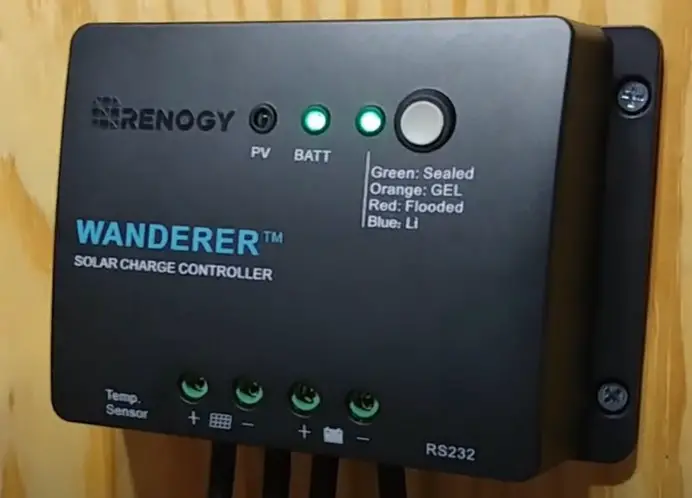
The device is a PWM type, rather than an MPPT, which significantly limits the capabilities of the unit. Although the technology isn’t as advanced, this model is still a great option for those looking to power small systems.
The four-phased PWM charger includes bulk, boost, float, and equalization, which help stop the connected battery from overcharging or over-discharging. It’s also negatively grounded, which is fairly standard.
The Wander can compensate for temperature changes. It will automatically correct the parameters for optimal performance.
It’s compatible with a remote temperature sensor that will collect data on temperature compensation. You need to buy that device separately.
With the ability to connect to sealed, gel, and flooded batteries, the PWM controller is pretty versatile. It also has safety protections. That helps to safeguard against overcharging, overloading, short-circuits, and reverse polarity.
Our Experience
While some consider the device to be bare-bones, we think it’s effective and reliable. It’s a perfect option for lighting in gardens or on the sides of barns, but not for large household grid-tie arrays.
Some users have had issues with the controllers not working after a few months. One has reported difficulty using the connectors at the bottom of the unit. We have had this charge controller for a short period, and we haven’t had any issues. We hope we don’t have them in the future.
Overall, we consider the Wanderer to be a basic solar charge controller that can meet non-complex and small-scale needs.
See Price on Amazon6. Best Budget Choice: MOHOO 20A Charge Controller
Product Ratings
| Quality VS Price | 4/5 |
| Practicality | 5/5 |
| Reliability | 3.5/5 |
Type: PWM | Battery voltage: 12-24V | Max input voltage: 24V | Max current output: 30A
What We Liked
- Can use it with both 12V and 24V systems, including charging phones or small devices directly
- Great price
- Easy to install
What We Didn’t Like
- The user’s manual is unclear and doesn’t have enough information about the product
- Other users have reported that their charge controller stopped working after one month
Description
Extra features: Auto shut-off, safety protections, moisture coating, LCD screen display, USB ports.
As the cheapest option on our list, the MOHOO PWM charge controller is a great no-fuss option for those with small solar systems. It’s ideal for charging things such as lighting and small digital devices, like cellphones.
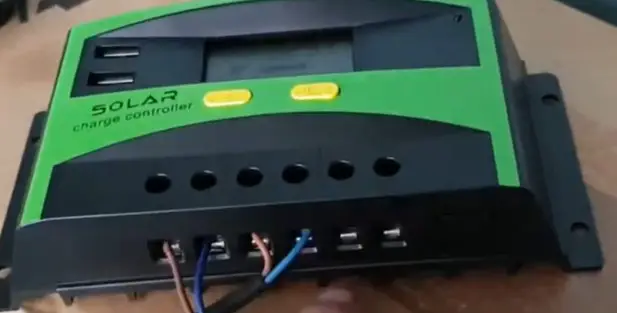
The MOHOO is one of the better PWM charge controller type models. However, it still doesn’t have nearly the same capacity as an MPPT controller.
Regardless, this model can provide bulk charging of up to 80% of capacity. It also provides float charging of the final 20% of capacity and an equalization charge.
The large LCD screen can display important information on the specifications of the unit, and it also supports lighting controls. The intelligent system will perform an auto shut-off when the battery drops below 8V, rendering the display empty.
The controller is only compatible with lead-acid batteries, and will not work with ones made of lithium, nickel-metal hydride, or other elements. But the moisture coating will protect the unit from damage caused by humidity or nesting insects, which is a plus side for those installing them in garages or barns.
The MOHOO charge controller is also equipped with two DC outputs and 2 USB ports for easy charging. The USB ports can provide a 5V 3A output, which is suitable for small digital devices.
Our Experience
For the most part, we’re happy with the compact MOHOO model. We don’t find it the most efficient option, but this is a downside that comes with all PWM charge controllers. For the price, it does a decent job.
What we really like is the extra USB ports for charging cell phones, but we have to say that we were concerned about this part because we read some reviews from other users who had bad experiences where the controller drained their batteries.
We recommend this charge controller for work trailers because it’s very easy to install and affordable, too.
See Price on AmazonConsiderations When Buying a Solar Charge Controller
To select a solar charge controller, you need to know the type of system you’ll be using it with, whether it be a 12, 24, 48-volt, or 110-volt/220-volt AC system.
You also need to know the total number of batteries of your system, as well as their amp-hour capacities. Finally, determine if you don’t want any kind of blocking diodes inside your controller, depending on the kind of batteries.
Purchasing a high-quality solar charge controller is an investment, especially for top-of-the-line MPPT models. That’s why it’s so important for you to have a clear idea of what you’ll use your charge controller for before deciding to buy a specific one.
There are several different factors to look at beyond the actual math of figuring out the amps/watts/volts of your solar array and batteries. Each user will also need to take into consideration the type of device they want to charge, whether that be a large household with an off-the-grid system or an RV with deep-cycle batteries.
What Type of Weather Will Your Panels Be Exposed To?
Ironically, solar panel kits work best under cold and cloudy conditions than in the full sun. This is because temperature affects the efficiency of a solar panel. For example, a 100-watt solar panel at about 70°F temperature will become an 83-watt panel at 110°F.
That being said, if your solar panels are regularly exposed to rainy or cold weather, a PWM controller’s input voltage ratings will pull down as the temperature drops. At high temperatures, the voltage input may drop to below the point needed to fully charge the battery.
In such cases, an MPPT controller is the best option because it regulates temperature and compensates for the changing voltage. In fact, you can experience a 10-15% power gain in summer and a 20-45% gain in winter with an MPPT charge controller, although this may vary depending on a variety of different factors.
Some solar controllers offer battery temperature sensors which will enhance the battery capacity. This is a great option for those looking to place their panels in varied environments with strong weather patterns.
What is the Voltage of Your Solar Panels and Battery?
Depending on the voltage of your solar panel, you might not even need a charge controller. When it comes to small panels that put out 2 watts or less for every 50 battery amp-hours, solar charge controllers are unnecessary.
However, you should equip every solar panel and battery that puts out more than this general standard with a charge controller. That will regulate the output and efficiency of your system.
Most battery bank voltage falls within the 12-48VDC range, which the charge controller will need to match in output.
However, the most important part is the capacity of the controller to handle the current from your solar panel array. In order to figure out how many amps you need, you’ll need to do a bit of math.
Here are two different equations you can use to calculate the amps requirement:
- Solar panel wattage/battery bank voltage = amps requirement
- Short circuit current of the solar array X 1.56 = amps requirement
On the other hand, if you’re working with a high voltage system with grid-tie solar panels, it’s best to use an MPPT controller. These can take up to 150 volts DC input and can convert the amps to max power so you’ll lose minimal power during the process.
What Are You Planning to Power?
For those looking to power smaller loads, like lights and small appliances, LOAD or LVD outputs are good options. The load terminal has a low voltage disconnect and will turn off a connected device to keep the battery from being expired.
This option is used for non-critical loads and can sometimes be used as a lighting controller that will automatically turn the device on at dusk. However, this system is only used for very small inverters and cannot be used with anything higher than 60 amps as it may cause it to malfunction.
If you’re looking to power a remote system, like the ones you’ll use in an RV or for a solar lantern, then a LOAD/LVD output is great. A PWM controller is also ideal for these types of devices as it’s a low-cost option and can only handle small loads as it is.
On the other hand, large devices, like grid solar panel systems, require an MPPT controller. These technologically advanced and expensive controllers are much more suitable for large loads.
Where Should the Solar Panels Be Placed in Relation to the Battery?
If your solar panels are placed a fair distance from your batteries, you’ll experience significant power loss and voltage drop unless you’re using a large wire.
This can be quite cumbersome for those who don’t have the room or the budget to use big wires across large distances, especially those with grid systems.
However, an MPPT solar charge controller can allow you to use a much smaller wire as it will convert the voltage. In this case, an MPPT is the best choice compared to a PMW charge controller.
Frequently Asked Questions (FAQ)
Q: What’s the Difference Between MPPT and PMW Charge Controllers?
A: The primary difference between the two is that the MPPT controller allows for up to 30% more power than the PWM controller and can be used for higher voltages. While the MPPT controllers are more power-efficient (up to 98%), they’re significantly more expensive compared to the PWM controllers.
Q: What is a PMW Charge Controller?
A: The MPPT controllers are capable of handling inclement weather as they’ll preserve the battery output and compensate for low power. It will also convert voltage for input and output sources, resulting in very little loss of power. Depending on the model, the controller should be able to handle a solar array of up to 150VDC.
Q: What is a PMW Charge Controller?
A: A PWM controller is a switch that connects a solar array to a battery. It often leads to low power output when the outside temperature is very high or low.
Ultimately, the PMW is more outdated in terms of technology and doesn’t have as many benefits as the MPPT charge controller when it comes to battery regulation.
Q: Is the MPPT Charge Controller Always Better?
A: The short answer: not necessarily.
Only those looking to power small devices and appliances should opt for the PWM charge controllers. They’re more budget-friendly and can handle low voltage.
However, those seeking to install solar panels on their roofs, or power large systems, should go with the MPPT charge controllers. They can help keep the amperage low and wire size small. They do that while connecting a series of higher voltage panels.
